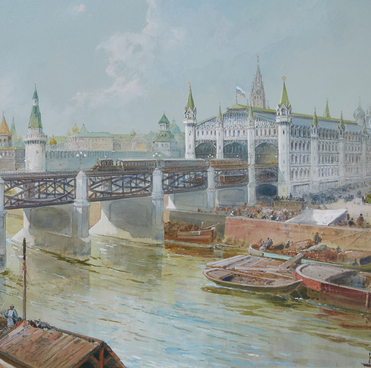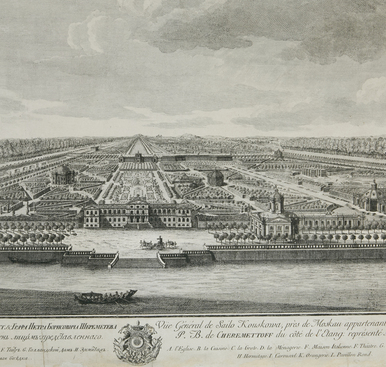The painting by the artist Pyotr Ivanovich Sapunov from the art collection of the Museum of Moscow depicts a stage of construction of the Moscow metro on Ostozhenka Street, which was renamed Metrostroevskaya Street in 1935. Judging by the angle and abundant details, Sapunov worked from nature.
The epoch of grandiose transformations of the capital could not escape the artist’s attention. In using ocher tones and clear blue sky visible through the support structures and pipes of the foundation pit, Sapunov conveys his enthusiasm about the scale of the construction of a new transport system.
The first proposals for the construction of the Moscow Metro appeared in 1875, when the idea arose to lay a line from the Kursky Train Station through Lubyanskaya and Trubnaya Squares to Maryina Roshcha. In 1902, the engineers Pyotr Balinsky and Yevgeny Knorre submitted their design according to which an underground line was to connect Zamoskvorechye with Tverskaya Zastava, but it was rejected by the city Duma. The new metro project, which was eventually implemented and further developed, was approved by the resolution on the construction of the Moscow Metro in June 1931 by the plenum of the Central Committee of the All-Union Communist Party of Bolsheviks and the Soviets of People’s Commissars of the RSFSR and the USSR.
The first project was developed by Siemens-Bauunion. It proffered the open cut excavation method. In 1933, the technical design of the first stage of metro construction was approved. At the same time, the trust Metrostroy began major construction work, duplicating some routes of Moscow tram lines underground. It is this initial stage — the implementation of the open excavation method — that is captured in the painting by Pyotr Sapunov. This method is considered the simplest in underground construction. The process involves building tunnels and stations in trenches and pits, after which they are covered with soil. In such construction, wooden logs were used as transverse fasteners, in addition to metal beams. This is also reflected on the canvas. During the construction of the Moscow Metro in the 1930s and 1940s, this excavation method was the main one. Hence, Sapunov’s painting “At the Bottom of the Pit. Ostozhenka Street, Distance No. 7 ‘Metrostroy’. Open Excavation Method” is a historical monument of that era.


